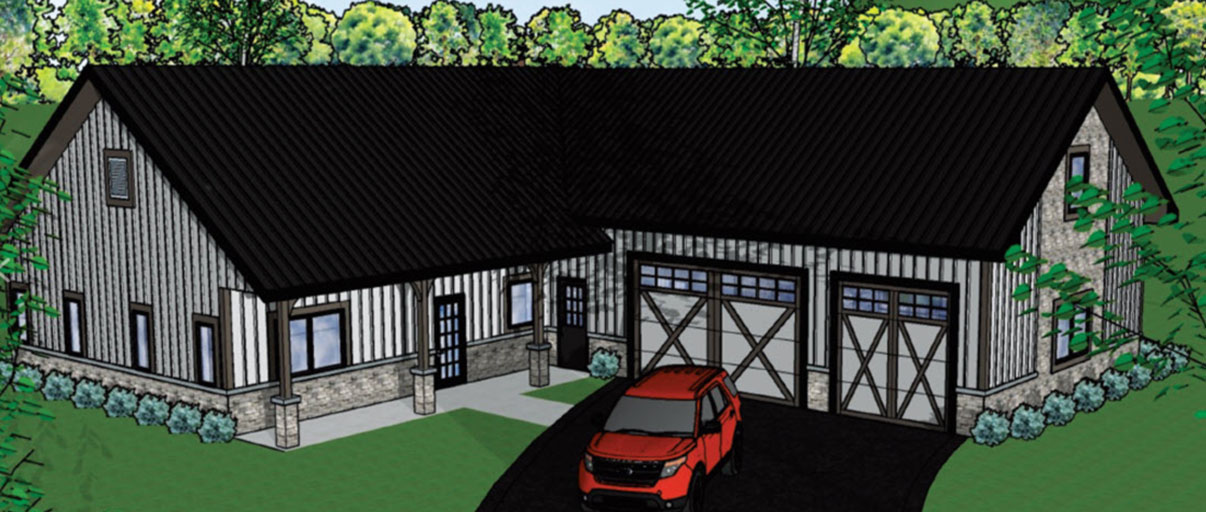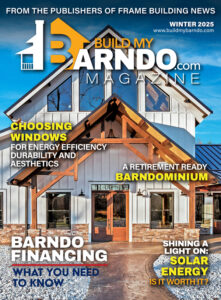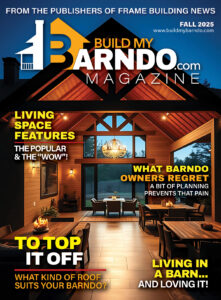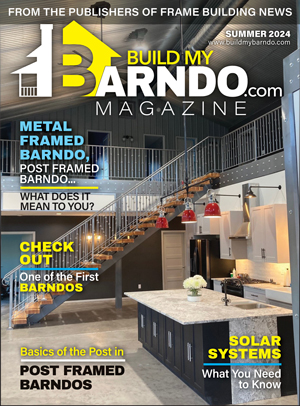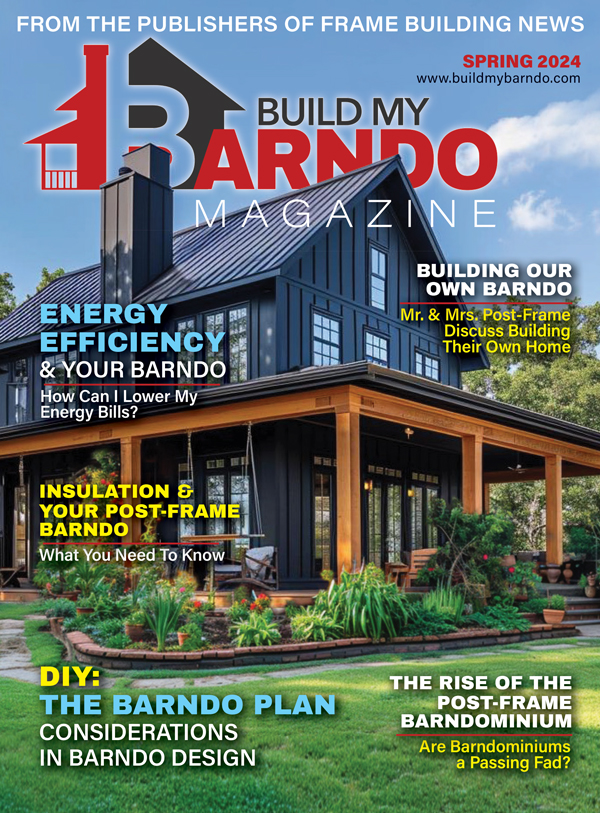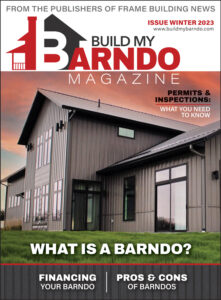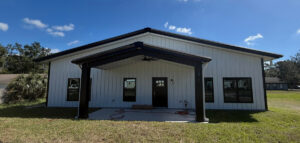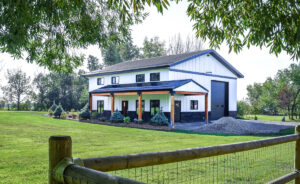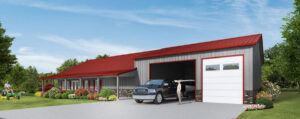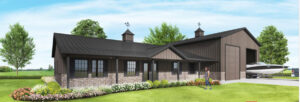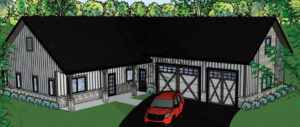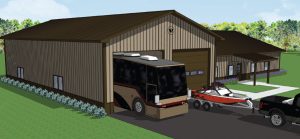By Linda Schmid
Are you a DIYer? Many people love to dig into a project and get their hands dirty, and a barndominium provides many such opportunities; it just depends on how far you want to take it. We have some tips here for people who may want to have a hand in the building of their new home.
Getting Started
When you are considering having a barndo built, there are many initial questions that should be resolved. With so many things to consider, Emily Marshall of Mr. and Mrs. Post Frame suggested starting with these:
-Where are you building? Have you acquired the property?
-What does the county and/or local government require for you to move forward?
-What is your budget? Is it realistic for what you wish to build?
-How many bedrooms do you want? Would you like a master bedroom?
-Do you want loft space?
-What kind of kitchen are you thinking of?
-Do you want high ceilings? In which rooms?
-Are you thinking of one story? Two? Will you want a basement?
-How big do you want your home to be?
-How many baths do you want?
-Do you want a covered porch? A 3-season room?
Once you have answered some basic questions,
Home Plans by the DIYer
One of the most exciting parts of building a new house is planning the layout. It can be a lot of fun; you don’t like that the master bedroom is right next to the kids’ bedroom? No problem…just move it to the other side of the bathroom, flip it the long way and now it juts out into the back yard with many opportunities for windows and patio doors leading out to the covered porch and the garden beyond. You would like to make the kitchen feel cozy and you wish you had a family room to ship the kids off to…add a loft over the kitchen and you’ve resolved both.
However, professionals warn that this is not the part of the build that you should do completely on your own.

Plan and illustration courtesy of Wicks Buildings
“When builders create their own designs, they usually incorporate errors,” Keith Dietzen of SmartBuild Systems said. “Unless they have some background in layout, they may not know where the plumbing needs to go and what the egress demands are. They may even inadvertently add on to the cost of the build because, for example, they don’t realize that if they moved the window over a bit, they wouldn’t need to add a header for support.”
Dietzen continued, “Another problem with creating your own plans is that someone in the building department of the municipality is going to have to sign off on this project. If they require certified drawings, you will likely have to go to an engineer, and that can be very costly,” he added.
Marshall added, “In most cases, I don’t recommend people drawing up their own plans. It’s good to have ideas, but it’s equally good to have somebody who understands post-frame to create architectural plans. They will ensure correct dimensions, architectural details, create 3-d plans, and help you get as much as possible from your build.”
Before You Go Too Far…
While your budget was mentioned in the “Getting Started” section, as a very important part of planning, it deserves a few words here. Unless you have an unlimited budget to work with, you will likely have to check your budget periodically as you plan. It is easy to include a little luxury here and an upgrade there without realizing just how far off budget you have wandered. It’s okay to dream and think out-of-the-box, as long as you consider trade-offs before committing to anything. You don’t want to get far into the project only to realize that the one feature that was most important to you must be cut because you’ve run out of money, whether that is stone exterior accents, hardwood flooring, floor to ceiling windows, or whatever it might be.
Your Home’s Flow and Room Size
Designs can look great on paper, but you need to imagine living in it. For example, consider the flow of the rooms and how it will work for you and your family. For instance, a short, rather narrow hallway leading from the great room into the kitchen might work well if you live alone and don’t entertain a lot. However, if you have children, pets, friends, and in-laws trailing into the kitchen to talk to you while you are cooking, then that may not be an ideal layout for you.
You will also want to consider things like entranceways. Will people be entering directly into your living space? Will there be carpeting they will mess up if there is no mudroom?
What is the first thing people will see as they enter your home? Will they be looking at your laundry room or your kitchen?
Consider your dining area. Do you want to be staring at the bathroom with the toilet in plain sight?
What about the guest room? Is it upstairs where grandma will have a hard time accessing it? What about the master bedroom…will having it on the second floor be a difficulty as you get older?
Take your home plan and try to visualize it life-size and imagine living in that space and what difficulties may arise.
Related to flow is room proportions. While the dining area may look ample on paper, you may find that in reality you are squished together like sardines. If you are unable to visualize it, you might try measuring it out and laying string to really get a feeling for space.
Another dimension to the room size is considering how your furniture will fit. If you have an antique desk that is a must, then plan the space for it. Measure your furniture and ensure that the things you love will fit in the spaces allotted for them. Even if you are getting all new furniture, you will still want to consider how much space you are allowing for it. It’s best to know what the average length of a sofa is before you reserve a space 6” short for it.
Another thing you may want to do, is to consider the functionality of a space. For example, look at your design and say to yourself, “okay, I’ve just walked in from the garage, now what is the first thing I will want to do? If your answer is turn on the light, then make sure you have a switch nearby. If the next thing you want to do is set down what you are carrying, then ensure there will be space to place a table or shelf on which to set things down.
Garage, Workshop & Storage
When deciding where to place your garage, there are several things to consider. Is there going to be a business incorporated into this space? If so, how difficult will access be for customers and/or delivery drivers?
Where do you want to enter your home from the garage? It is likely that you will want to enter somewhere near to the kitchen with groceries. Do you want people entering directly into a living space or would a mudroom be preferable?
You will also want to consider what you are blocking by the placement of the garage. In other words, consider the view and the sunrise/sunset/solar light that the garage will be blocking from your living space before you finalize placement.
How do you plan to incorporate storage space into the design? Will you have a basement or will most of your storage for things like seasonal decorations and clothing, camping equipment, crafting supplies, and other items that are not used every day be in the garage? If it’s to be in the garage, do you want a separate room for it?
Home Storage
Because many barndo owners opt to skip a basement in the interests of an economical build, they may incorporate extra storage into their home design. Some storage spaces to consider are extra-large closets, a pantry placed near the kitchen, maybe even a “what-not room”.
Natural Light and Outdoor Living
Windows and doors are not just about nice views and coming and going; they also let in light. Natural light can make a real difference in mood. Plus, feeling closer to nature is part of the allure of a barndo for many homeowners. If traditional windows don’t work well with your design, you might consider skylights in the kitchen, for example. You will want to consider placement carefully; sometimes moving a window over a foot can save money in the build.
The planning stage is also the time you should consider patios and/or three-season rooms. They are easy to add on to a barndo, particularly if you are putting the house on a slab. The slab is just extended beyond the exterior walls by a few feet and the roof is extended over it, and voila: you have a covered porch. If you are looking for a 3-season room, you add walls and windows.
Green Considerations
In many cases green components are incorporated into a barndo automatically, for example barndos are usually pretty well insulated for efficiency and comfort’s sake, and that efficiency makes them green. Exteriors are often metal for longevity and ease of maintenance, but they are also very recyclable. However, there are many other ways to add green components to your build, thereby also making your home more energy efficient and saving you money. Check out our article: Energy Efficiency and Your Barndo.

